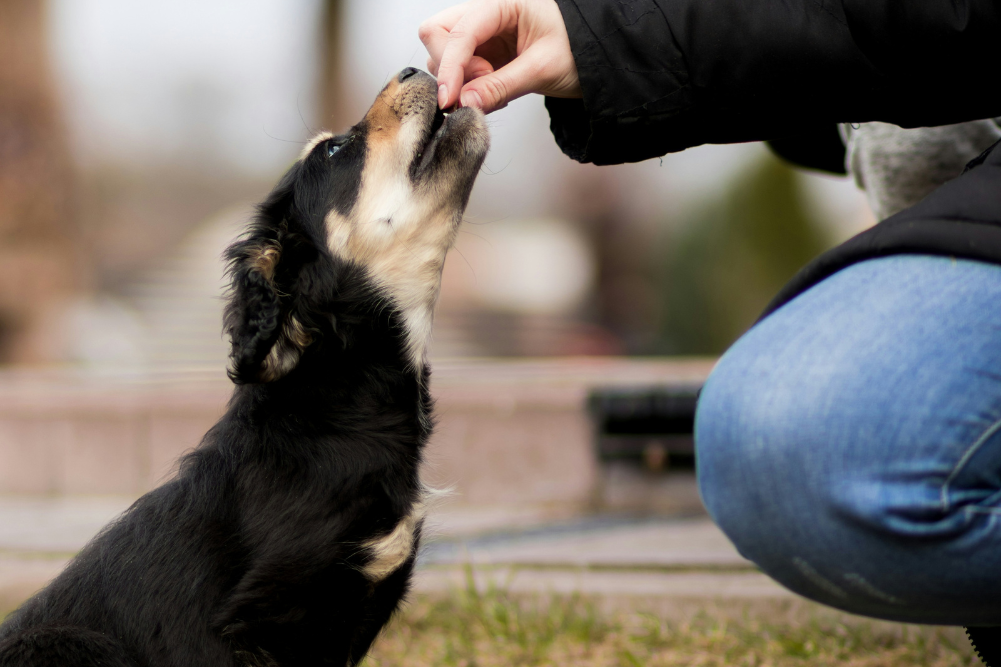Can acupuncture help our pets?
People are often surprised when I tell them I use acupuncture daily in vet practice. Even those folk who have had treatments themselves are bemused that cats and dogs will allow vets to stick needles in them. And they usually stay still.
I work in a practice where all our vets are either accredited in veterinary acupuncture or studying it via the International Veterinary Acupuncture Society (IVAS). We use acupuncture in almost every patient we see. It is used in dogs and cats to treat sore joints, back pain or spinal dysfunction. Equine veterinarians use it to treat colic, sore backs, laminitis, respiratory problems, some reproductive problems, sports injuries in racing or endurance horses and neurological problems such as facial nerve paralysis. It’s used on cattle to treat downer cows, and muscle and tendon problems. Some vets use it on birds.
What is acupuncture?
Traditionally, acupuncture involves the insertion of special acupuncture needles in specific points along a meridian, or channel, to heal or correct an imbalance. These needles are rounded at the end, and not cutting, so they don’t hurt when they are inserted.
Acupuncture has been shown to have both local and systemic effects. As well as analgesia, needling of acupuncture points releases hormones that reduce inflammation and results in relaxation or that feel-good sensation. In traditional Chinese medicine, acupuncture points are either sedated or stimulated to increase or decrease the flow of qi, or energy, along a meridian and achieve homeostasis.
There have been many scientific reviews that support the role of acupuncture in analgesia. More recently, studies are supporting the anti-inflammatory effect of acupuncture and its resulting longer-term relief of chronic pain. Research continues to reveal more information on the physiological effects of acupuncture.
Although there is no way to scientifically detect the meridians along which acupuncture points lie, scientists have shown that acupuncture points themselves differ from surrounding skin. Histologically, acupuncture points have increased nerved endings and blood and lymph vessels, and increased numbers of mast cells. These points have lower electrical resistance compared to surrounding skin, and high electrical conductance, and it’s this that allows practitioners to use acupuncture point detectors.
Acupuncture forms just one part of traditional Chinese medicine, which also includes nutrition, breathing techniques, tai chi, tui na (a specialised massage technique) and herbs to correct underlying imbalances. TCM practitioners make observations about a patient using their senses — sight, sound, smell, touch and, rarely, taste — and making an examination of the tongue and pulse to determine areas of imbalance. Palpation of acupuncture points may reveal active points, which further enlightens the practitioner. Acupuncture points are then selected to correct the imbalance.
What is it used to treat?
- Musculoskeletal conditions such as degenerative joint disease or intervertebral disc disease. Acupuncture is also used in the post-operative recovery of dogs after cruciate, fracture or spinal surgery.
- Skin conditions such as allergic skin disease or poor coat (combined with diet, lifestyle herbs and topical treatments)
- Urinary tract conditions such as urinary incontinence or cystitis
- Respiratory conditions such as allergic asthma or sinusitis.
- Cardiovascular conditions such as mitral valve insufficiency or palpitations.
- Central nervous system disorders such as vestibular disease.
- Gastrointestinal disease such as vomiting or diarrhoea.
- Disorders of reproduction such as infertility or whelping problems.
- Eye conditions such as conjunctivitis or dry eyes.
- Ear conditions such as otitis externa. There are many acupuncture points around ears and eyes that can be needled in some patients, or treated with laser.
- Geriatric conditions.
Acupuncture techniques can be used for dogs and cats suffering from cancer. We would usually avoid needling points near an aggressive tumour, however we can use acupuncture to relieve symptoms such as pain or nausea. Ting point acupuncture is a specialised technique used to treat some cancers.
As well as needling, there are several other techniques used to activate acupuncture points. Acupressure uses gentle but firm pressure from your thumb on the points for 60 seconds. This is a technique that can be used by pet owners between sessions.
Low-power lasers are useful for acupuncture on very small dogs or cats, or debilitated patients. Moxibustion uses a stick of burning moxa to warm acupuncture points, usually along the lower back. Electro acupuncture is most effective for pain relief. Acupuncture needles are connected by electrodes and a gentle electrical current is run through. This is a treatment that can relieve hip or back pain in dogs.
Gold beading is a form of acupuncture that utilises small gold wire “beads”, which are inserted under anaesthesia into points around a painful joint. The gold has an anti-inflammatory effect. It reduces the negative charge of an inflamed joint and slows or stops calcium deposition. Gold beading can provide prolonged pain relief and can be used to treat chronic degenerative joint disease resulting from anterior cruciate ligament rupture, hip dysplasia, luxating patella and elbow dysplasia.
Aquapuncture is the injection of a homoeopathic anti-inflammatory solution, sometimes combined with vitamin B12, into acupuncture points. This results in a longer activation of the points than needling. Aquapuncture can be used in patients under anaesthesia; for example, if we X-ray a dog under anaesthesia and find a painful degenerative joint, we can treat the dog with aquapuncture at the same time.
Prolotherapy is not really acupuncture but is often combined with aquapuncture. A solution of diluted dextrose is injected in minute amounts alongside to reduce inflammation and improve stability of joints.
Acupuncture opens up treatment options for many if not all acute and chronic problems we encounter in veterinary practice. Using TCM allows us to think outside the box and at times find treatment options where conventional medicine offers little help. I don’t know how I would practise without it.
Karen Goldrick is a holistic veterinarian at All Natural Vet Care, Russell Lea, Sydney. T: (02) 9712 5844 W: naturalvet.com.au







